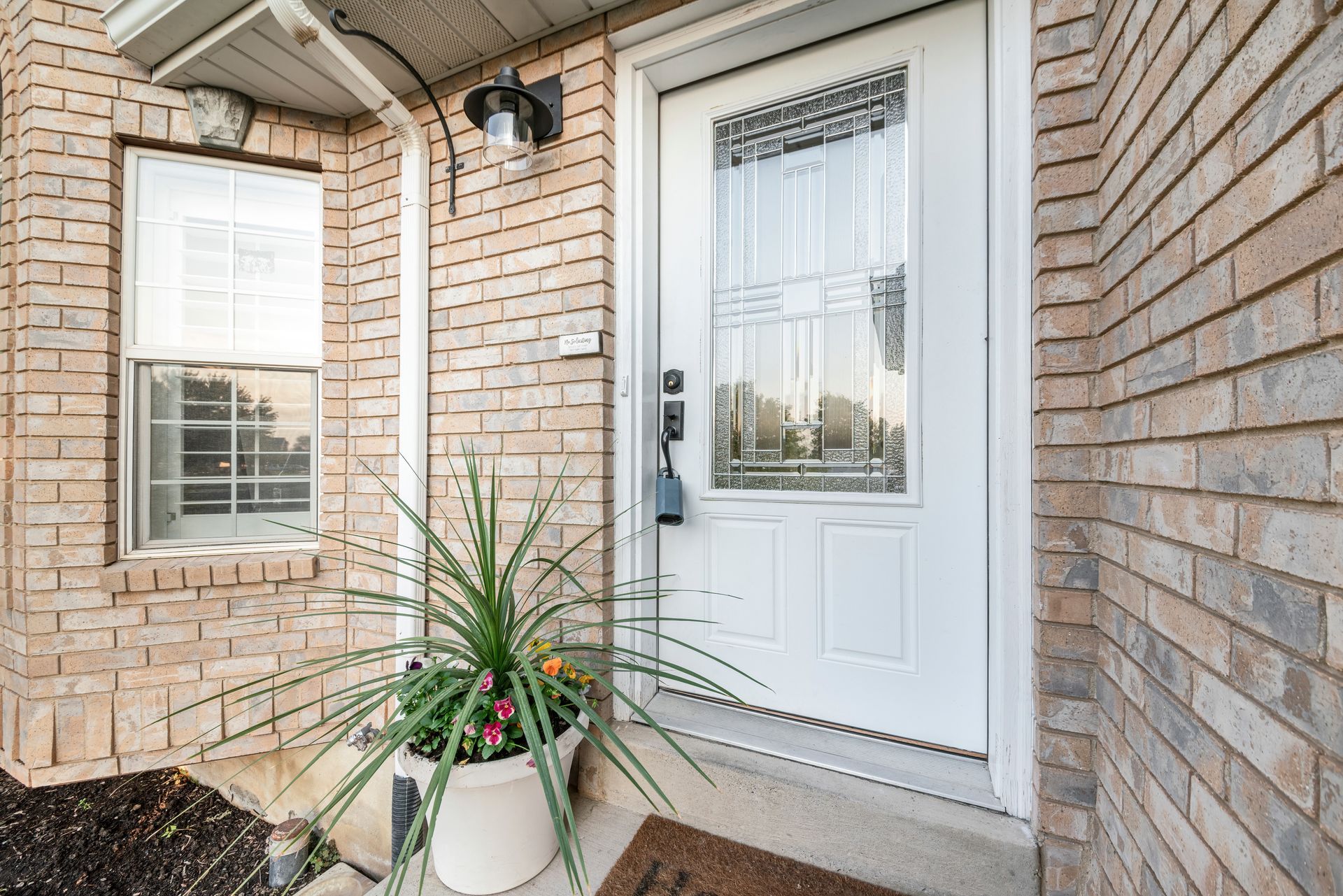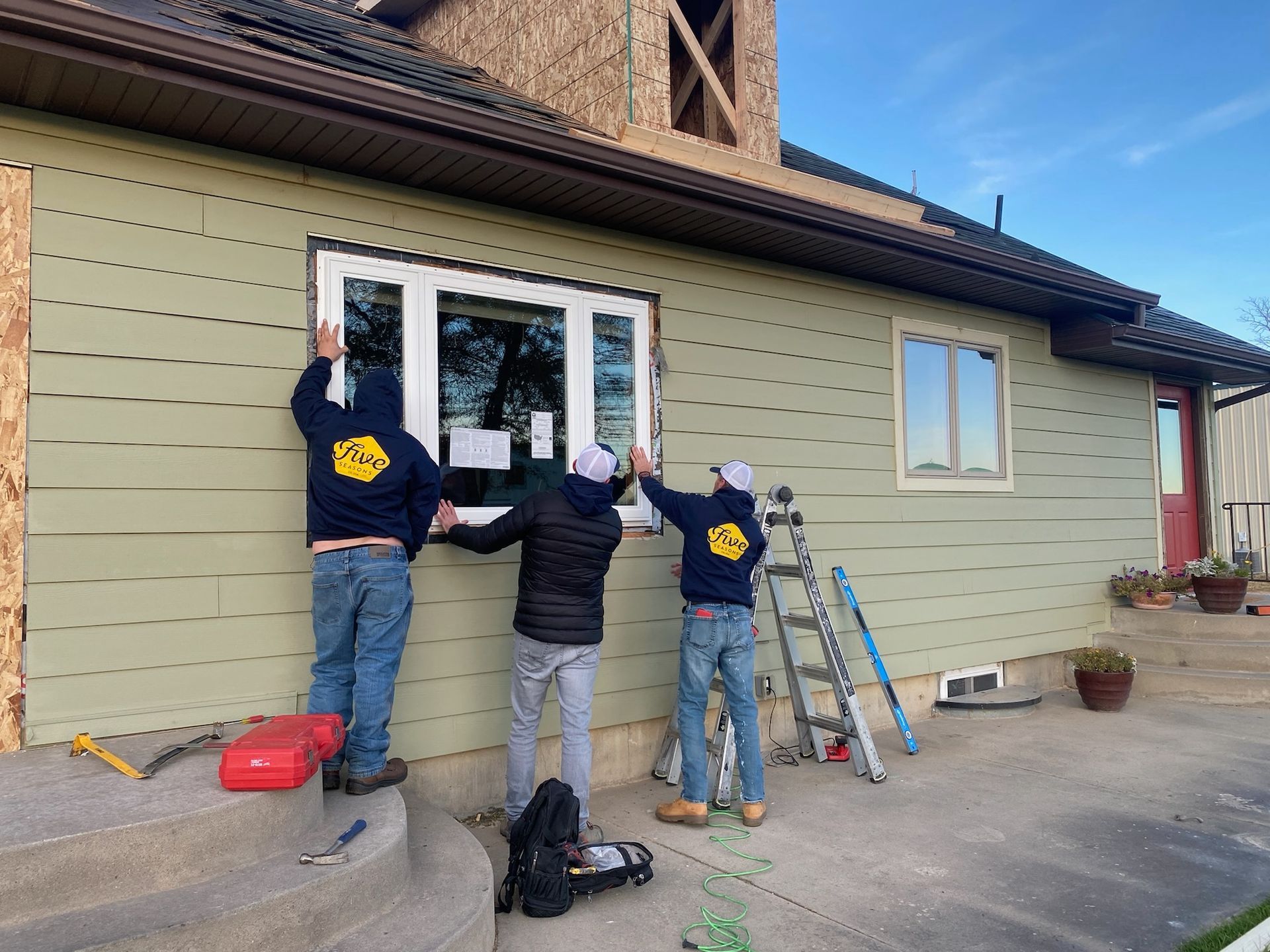Introduction
When considering home improvements in Colorado, entry doors often go overlooked. Yet, they play a significant role in your home's energy efficiency, security, and comfort. With the state’s fluctuating weather—from freezing winters to blazing summers—choosing the right type of door isn’t just about aesthetics. It’s about performance, savings, and peace of mind.
Insulated entry doors offer a unique combination of thermal protection, sound dampening, and structural strength. In this article, we'll explore why more Colorado homeowners are making the switch and what you should know before upgrading your door.
What Are Insulated Entry Doors?
Insulated entry doors feature a solid core, usually filled with materials such as polyurethane foam or polystyrene, designed to limit heat transfer. Unlike hollow-core or traditional wooden doors, these provide a physical barrier against outside temperatures.
They often consist of a steel or fiberglass shell, which adds durability and minimizes expansion and contraction caused by weather. Quality insulated doors are typically sealed tightly around the frame to further reduce drafts and improve indoor comfort year-round.
These doors may also include thermal breaks—interior spacers that prevent temperature from transferring across the door surface—making them particularly effective in high-altitude or extreme climates like Colorado.

Why Insulated Entry Doors Matter in Colorado
Colorado’s unique climate—with sharp temperature swings, snow, wind, and high UV exposure—demands building materials that can withstand and adapt. Entry doors are the first line of defense between your home and the outdoors, making insulation especially critical.
Cold drafts in the winter or heat intrusion in the summer can drive up energy bills. Insulated entry doors help maintain interior comfort by minimizing these effects, allowing HVAC systems to work more efficiently. That translates into reduced energy consumption and more consistent indoor temperatures.
Additionally, homes in Colorado often sit at elevation, which can increase exposure to solar gain and intensify thermal losses. Insulated doors are specifically designed to counteract these factors.
Key Benefits of Insulated Entry Doors
1. Energy Efficiency
By reducing air leaks and heat transfer, insulated doors help regulate indoor temperatures and reduce the strain on your heating and cooling systems. This efficiency often results in lower utility bills.
Over time, the energy savings can accumulate significantly, especially in homes that currently rely on outdated or poorly sealed entry doors. Energy-efficient doors can reduce heating and cooling costs by up to 10% annually according to the U.S. Department of Energy.
2. Improved Security
Insulated doors are typically built with sturdier materials, making them harder to dent or break through. This added strength also contributes to long-term durability.
Many models come equipped with reinforced locking mechanisms and internal steel cores, enhancing protection without sacrificing style or thermal performance. This peace of mind is especially important in remote or suburban areas.
3. Noise Reduction
The dense core materials not only help with thermal insulation but also reduce the amount of outside noise that enters your home, offering a quieter and more relaxing environment.
This can be a valuable benefit for homes located near busy streets, schools, or public spaces. Insulated doors help turn your entryway into a sound barrier as well as a thermal one.
4. Comfort and Moisture Control
Drafts and moisture seepage are common problems in older or non-insulated doors. Insulated models often feature better weatherstripping and tighter seals to keep your home dry and comfortable.
This prevents mold and mildew from forming near the door frame and enhances indoor air quality—an often-overlooked benefit of a properly sealed entryway.
Comparing Insulated vs. Non-Insulated Doors
At first glance, insulated and non-insulated doors may look similar. However, their performance diverges significantly over time, especially in Colorado’s climate.
Non-insulated doors can warp, allow drafts, and may feel cold or hot to the touch depending on the season. These temperature fluctuations not only affect comfort but can also lead to premature wear and tear.
Insulated doors, by contrast, offer superior climate control. They help stabilize the temperature inside your home, reduce energy costs, and extend the lifespan of HVAC systems.
Over a decade or more, the energy savings and reduced maintenance costs often make insulated doors the more economical long-term choice.
Entry Door Materials That Support Insulation
Several materials are commonly used to manufacture insulated entry doors, each with its own advantages:
● Fiberglass: Durable, weather-resistant, and can mimic the appearance of wood. Typically filled with dense foam insulation.
● Steel: Offers excellent security and strength. Often paired with foam cores for thermal performance.
● Wood-Clad or Composite: Combines the warmth of wood aesthetics with modern insulation technologies inside.
Choosing the right material involves balancing budget, appearance, and performance. For help comparing materials like fiberglass and vinyl, see our guide: Choosing Between Fiberglass and Vinyl Windows: A Practical Comparison.
Installation Quality and Energy Performance
Even the most efficient insulated entry door can underperform if not installed properly. In Colorado, where wind-driven snow and rapid temperature shifts are common, precise installation is key.
Gaps, misalignment, or weak weatherstripping can undermine the insulation benefits. That’s why professional installation—especially by a company familiar with local climate challenges—is strongly recommended.
Look for contractors who use expanding foam around the frame, conduct a full energy seal test, and align the door squarely to avoid sagging or drafts.
The Role of Design in Insulated Entry Doors
Aesthetic appeal and functionality don’t have to be at odds. Today’s insulated entry doors come in a wide range of colors, finishes, window inserts, and panel configurations.
Decorative glass can be insulated as well, and modern designs can complement traditional or contemporary homes. You can enhance curb appeal without compromising thermal performance.
Many doors also offer smart locking systems, multi-point latches, and custom sidelight options, combining security, beauty, and comfort in one package.

Common Misconceptions About Insulated Doors
Myth 1: They all look like plain steel doors.
Reality: Today’s insulated doors can be made to look like rich wood grain, with color and texture options that rival traditional wood or painted doors.
Myth 2: They’re only for cold climates.
Reality: Insulated doors also keep heat out in summer, reducing your cooling costs and protecting interiors from UV damage.
Myth 3: They’re too expensive.
Reality: While the initial cost is higher than a basic non-insulated door, the long-term energy savings and added durability typically offset the investment.
People Also Ask About Insulated Entry Doors in Colorado
Are insulated doors really worth it in Colorado?
Yes. The energy savings, comfort improvements, and durability they provide are especially valuable in Colorado’s extreme and changing climate. Over time, the cost savings often outweigh the upfront investment.
Colorado’s sharp temperature swings, intense sunlight, and winter storms make standard doors vulnerable to performance issues. Insulated doors are engineered to maintain a consistent barrier between indoor and outdoor temperatures. As a result, you’ll likely experience fewer cold drafts, more stable indoor temperatures, and longer-lasting door components. Many homeowners report that the improved comfort and reduced strain on HVAC systems justify the upgrade within just a few seasons.
How do I know if my entry door is insulated?
Check the door’s weight, look for labeling from manufacturers, or remove the interior trim to see if there’s visible foam core. If your door feels hollow or allows drafts, it may not be insulated.
An insulated door will generally feel heavier and more solid when closed. Some may feature an energy performance sticker near the hinges or have documentation included in your home inspection report. You might also see a metal or fiberglass skin with no visible grain, which often suggests a foam core. Conducting a home energy audit using infrared thermography can help detect heat loss around doors and windows—an ideal method to confirm insulation gaps.
Which is better: fiberglass or steel insulated doors?
Fiberglass is more resistant to denting and warping and is often preferred for aesthetics. Steel is stronger for security but can rust if scratched. Both can be excellent choices when properly insulated.
Fiberglass insulated doors tend to mimic real wood without the maintenance, making them a popular choice for homeowners seeking beauty and performance. They also resist moisture and are less prone to expansion or contraction in variable weather. Steel doors, on the other hand, excel in security and affordability. Their core insulation can be just as effective, but surface damage from dents or chips can expose them to corrosion. Ultimately, the best choice depends on your climate exposure, aesthetic preferences, and whether you prioritize style or strength.
How long do insulated entry doors last?
With proper installation and maintenance, an insulated entry door can last 20–30 years or more, especially those made of steel or fiberglass.
The actual lifespan depends on exposure to sun, rain, and daily usage. Doors installed in shaded areas or with protective overhangs may last even longer. Maintenance involves periodic cleaning, lubricating hinges and locks, resealing caulking, and inspecting weatherstripping. High-end models often come with transferable warranties, adding resale value and peace of mind for future buyers.
Can I add insulation to my existing door?
While you can add weatherstripping or door sweeps to reduce drafts, retrofitting insulation into a door is difficult. Replacing the door is generally more effective.
Most standard doors lack the structural capacity to hold new foam cores or thermal breaks. Adding insulation without compromising the door’s weight balance or fit can be challenging. If you’re experiencing noticeable drafts or heat loss, it’s usually more cost-effective to invest in a factory-insulated model that meets ENERGY STAR® or NFRC standards. Retrofitting should be considered a temporary fix, not a long-term solution.
Our Take
For homeowners in Colorado, insulated entry doors aren’t just a luxury—they’re a smart investment in energy savings, comfort, and long-term home value. With climate extremes and growing energy costs, the benefits quickly add up.
We recommend choosing a fiberglass or steel insulated door with ENERGY STAR® certification and professional installation to ensure maximum performance. While the initial cost may be higher, the ongoing savings and durability are well worth it.
When paired with other energy-efficient upgrades—like modern windows or attic insulation—insulated entry doors help form a whole-home solution that keeps your home cozy in winter and cool in summer.
Additionally, improving your front entry boosts both aesthetics and resale value. In competitive housing markets like Denver or Boulder, buyers increasingly prioritize energy-efficient features. An insulated door can be a valuable selling point.
Final Takeaway
Insulated entry doors offer a simple but powerful upgrade for Colorado homeowners. They help regulate temperature, lower utility bills, improve security, and add to curb appeal—all with minimal maintenance.
Whether you’re building a new home or upgrading an older one, don’t overlook the entry door as a key part of your home's performance. The right insulated door can make your entire home feel more comfortable, secure, and efficient year-round.
Work with a trusted local installer who understands Colorado’s unique weather patterns and building standards. A professionally installed insulated door will deliver years of reliable service, energy savings, and peace of mind.
Get Started Today
Five Seasons Windows & Doors is Colorado’s top-rated local window company with 230+ 5-star reviews. We offer expert advice, no-pressure quotes, and flexible project options — including phased installs. Schedule your consult today.



